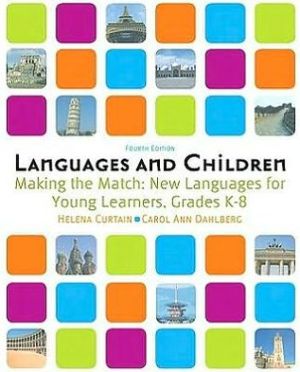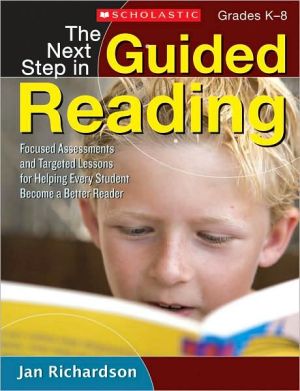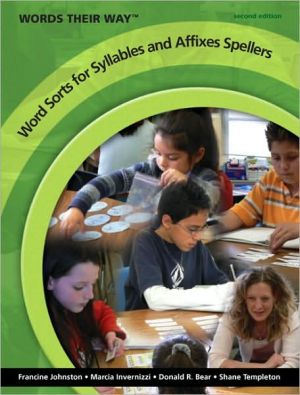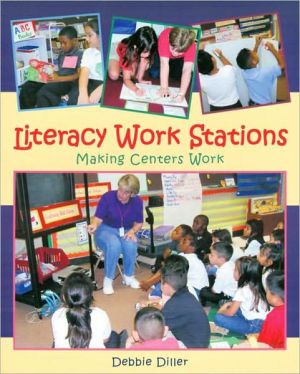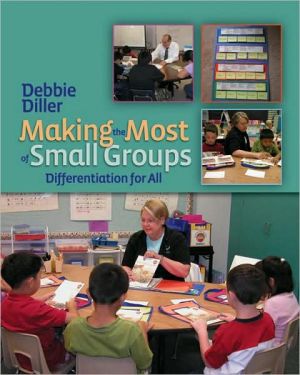Languages and Children: Language Instruction for an Early Start, Grades K-8
With a focus on communicative language teaching as it reflects cognitive and second language acquisition theory, this classic in the field provides a wealth of strategies and activities ready to use in the K-8 foreign language classroom. This popular and completely updated text is the only comprehensive foreign language methods text for K-8 classrooms that is also accessible and engaging for undergraduate students. Languages and Children: Making the Match, Fourth Edition, provides extensive...
Search in google:
With a focus on communicative language teaching as it reflects cognitive and second language acquisition theory, this classic in the field provides a wealth of strategies and activities ready to use in the K-8 foreign language classroom. This popular and completely updated text is the only comprehensive foreign language methods text for K-8 classrooms that is also accessible and engaging for undergraduate students. Languages and Children: Making the Match, Fourth Edition, provides extensive new information that is not easily accessible to the field. The Fourth Edition maintains the integrity of past editions while reflecting the new and fascinating language issues that exist in today’s classrooms and making standards-based planning and instruction the guiding principles throughout the book.
Key Concepts for Success: Elementary and Middle School Foreign LanguagesStandards for Foreign Language Learning in the 21st Century: OverviewPart I: The Learner Chapter 1: Making the Match with Characteristics of Young Learners CAD§ Second Language Acquisition§ Cognitive Characteristics of the Learner§ Developmental Characteristics of the LearnerPart II: CommunicationChapter 2: Creating an Environment for Communication CAD§ Meaningfulness as a Priority for Classroom Activity§ When is “Communicative” Not Communicative?§ Developing Contexts for Tasks and Activities§ Teaching in the Target Language: Context for CommunicationAdd Translation issuesChapter 3: Building Toward Communication in All Three Modes CAD§ Interpersonal mode: Standard 1.1o Vocabularyo Total Physical Response: TPRo The Natural Approacho TPR Storytelling: TPRSo Functional Chunkso Direct Teaching of Speakingo Writing and the Interpersonal Mode§ Interpretive mode: Standard 1.2o Listeningo Reading§ Presentational Mode: Standard 1.3o Speakingo WritingChapter 4: Focusing on Interpersonal Communication: Partners and Small Groups HC§ Cooperative Structures, Cooperative Learning, and Interactive Language Tasks§ Managing Small Group and Partner Activities§ Sample Cooperative Group Activities for Beginning Language Learners§ Sample Partner Activities for Beginning Language LearnersChapter 5: Building Literacy in the Early Language Classroom HC§ Connection between Oral and Written Language§ Building Blocks of Second Language Literacy§ Building Literacy in the Second Language ClassroomPart III: Planning Kieran Egan CAD 141-143Backward Design CAD 144UPI How to HC 148Delaware 155Differentiation 155 158?Chapter 6: Designing Instruction: Integrated Thematic Planning for Curriculum, Unit, and Lesson Design HC § Why Thematic Instruction for the Early Language Curriculum§ Thematic Planning for K-8 Classrooms§ Planning the Daily Lesson§ Planning for Immersion, Bilingual, and Content-Based Instruction§ Sample Partner Activities for Beginning Language Learners(Include Planning for a year and longer….)Chapter 7: Using Assessment to Help Students and Programs Grow CAD&HC§ Student Assessment§ Importance of Assessing Student Performance§ Grading§ ACTFL K-12 Performance Guidelines§ Program Assessment§ Student Achievement Testing§ Suggestions for Testing§ Teacher Evaluation§ Report card examples§ LinguafolioChapter 8: Managing the Successful Early Language Classroom HC§ Factors Beyond the Teacher’s Control§ Factors Within the Teacher’s Control: Classroom Management Basics§ Special Issues Affecting the Traveling Teacher–a la CartPart IV: CulturesChapter 9: Experiencing Culture in the Classroom: Culture, Language, and Content Interact CAD§ Culture and the Standards§ Creating Experiences with Culture§ Comparing Cultures: Standard 4.2§ Identifying Resources for Integrating Culture§ Culture Scope and Sequence§ Fantasy Experiences§ Classroom Exchanges§ Education for Global and Multicultural AwarenessPart V: ConnectionsChapter 10: Connecting Content with Language and Culture: The Connections Standards and Content-Related Instruction HC§ Making Connections Between Language and Content§ Programs that Relate Language and Content§ Integrating Language and Content§ Reasons for Content-Related Instruction?§ Curricular Areas with Potential for Content-Related Instruction (Standard 3.1)§ Using the Language to Acquire Information and Insight that Is Only Available Through the Target Language (Standard 3.2)§ Considerations for Implementation of Subject Content Instruction§ Techniques for Helping Students Access Content§ Special Considerations in Planning for Content-Related Instruction§ Challenges in Integrating Language and ContentChapter 11: Learning from the Success of Immersion Programs HC§ Immersion: What Is It? What Makes It Work? What Are the Results?§ Principles for Communication: What We Have Learned from Immersion Programs§ Characteristics and Applications of Immersion Programs§ Characteristic Strategies of Immersion Teaching§ Immersion IssuesPart VI: Resources Chapter 12: Choosing and Using Effective Materials and Resources HC§ Useful Supplies, Materials, and Equipment§ General Resources§ Realia§ Picture Visuals§ Classroom Equipment§ Audiovisual Equipment§ Visual Reinforcement in the Early Language Classroom§ Teacher-Produced Materials§ Choosing and Using Materials Wisely§ Selecting a Textbook and Other Curriculum MaterialsChapter 13: Bringing Language to Life: Classroom Games and Activities HC (CAD)§ Guidelines for Games and Activities§ Classroom Games and Activities§ Using Puppets in the Early Language Classroom§ Songs in the Curriculum§ Craft Activities§ Overhead Projector ActivitiesChapter 14 Bringing Language to Life with Technology: A Special Resource§ National Technology Standards for Students and Teacher§ Computer-Assisted Projects§ Using Technology to Increase Teacher Productivity§ Using the Resources of the Internet§ Electronic Portfolios§ Using Video in Early Language TeachingPart VII: ProgramsChapter 15: Making the Case for Early Language Programs: Rationale and Advocacy HC§ Where to Look for a Rationale for Foreign Languages§ Advocacy for Early Language Learning§ The Teacher as AdvocateStrengthen advocacy part; add bilingual, ESL, all kinds of programs; helping heritage speakers retain their heritageChapter 16: Learning from the Past to Enhance to Present and the Future CAD§ A Short History of Language Learning in the U.S.A.§ Renewed Interest in Languages for Young Learners§ Shaping a K-12 Vision for Language LearningChapter 17: Selecting and Staffing an Early Language Program Model HC§ Types of Programs§ Immersion Programs§ FLES Programs§ Exploratory Programs§ Non-Curricular Language Programs§ Staffing Elementary School Programs in Languages other than English§ Other Instructional Models§ Staffing Appropriate Only for Short-Term, Non-Curricular ModelsChapter 18: Planning, Assessing, and Articulating Early Language Programs HC§ Planning Process§ Issues in Articulation§ Characteristics of a successful programChapter 19: Developing Professional Teachers for Early Language Programs CAD§ Preparation of Teachers§ ACTFL Program Standards for the Preparation of Foreign Language Teachers§ The K-8 Language Teacher as a Growing ProfessionalWorks CitedAppendix: ACTFL Performance Guidelines for K-12 Learners, ACTFL, 1998.Index
